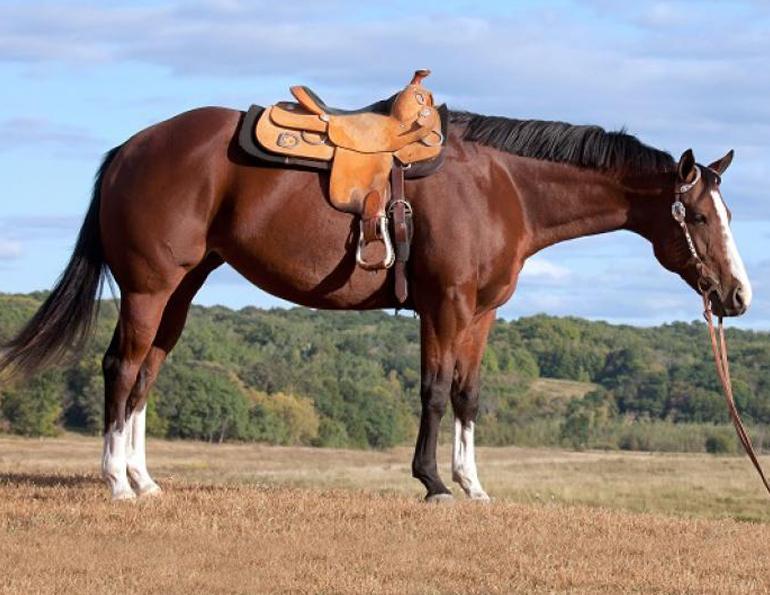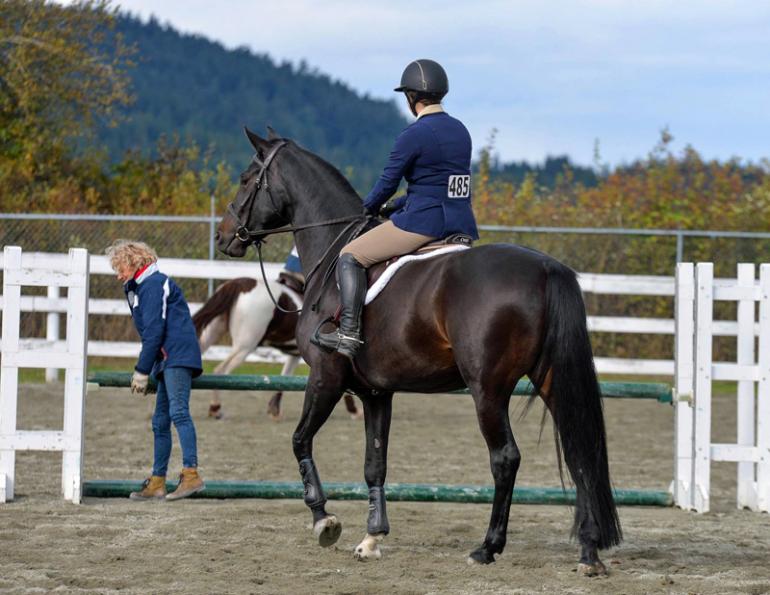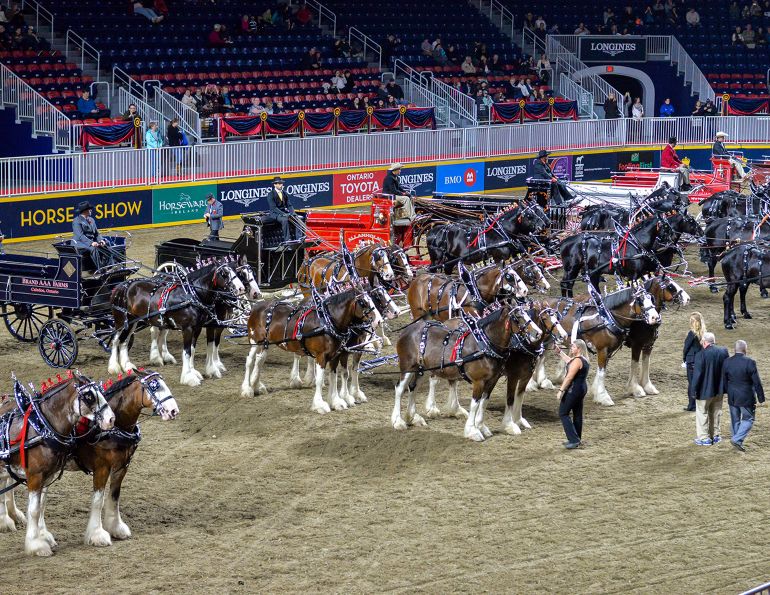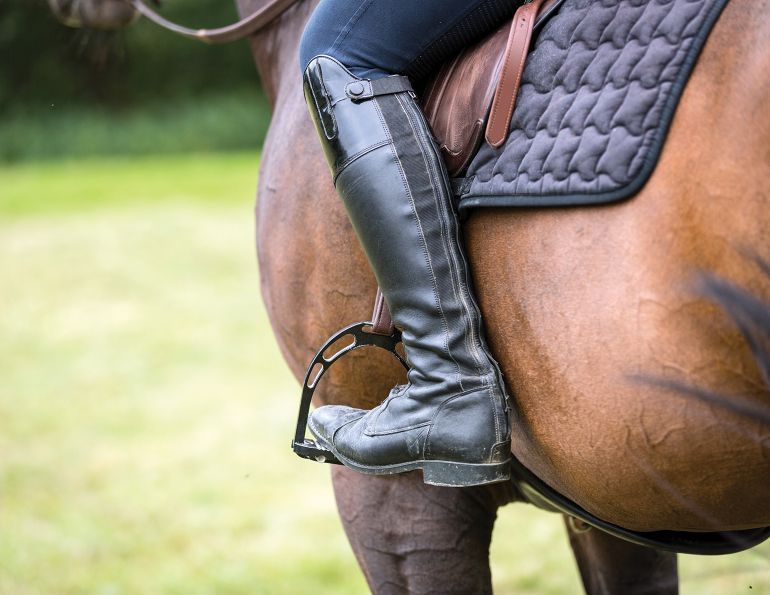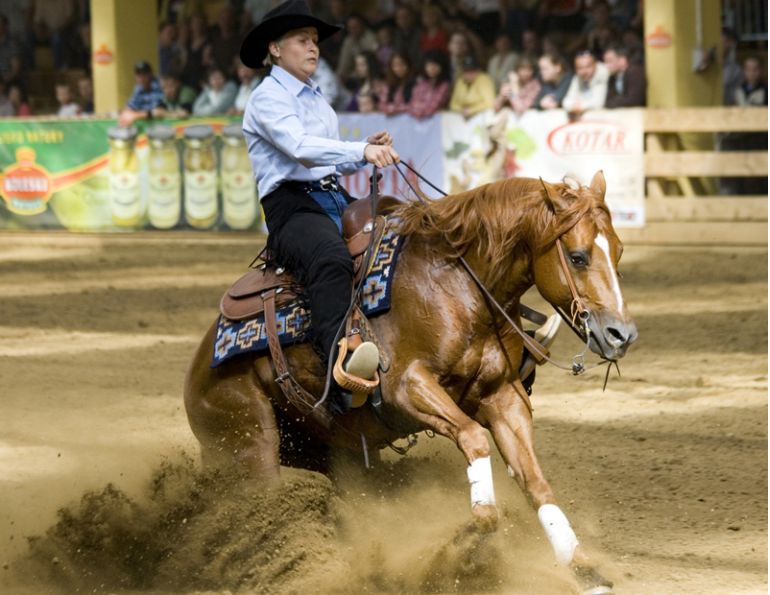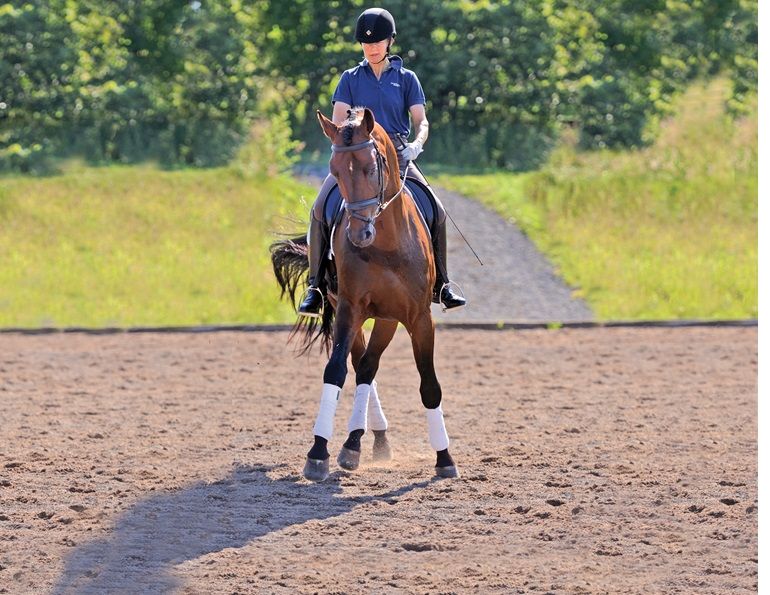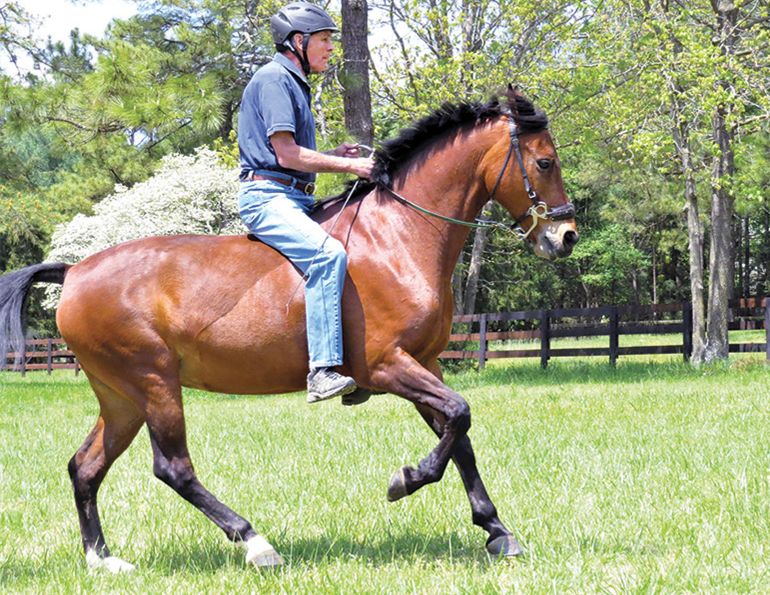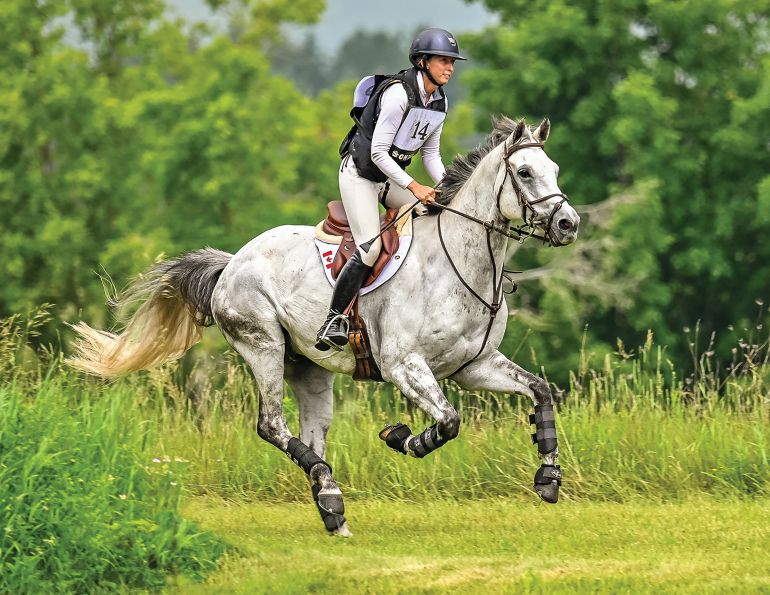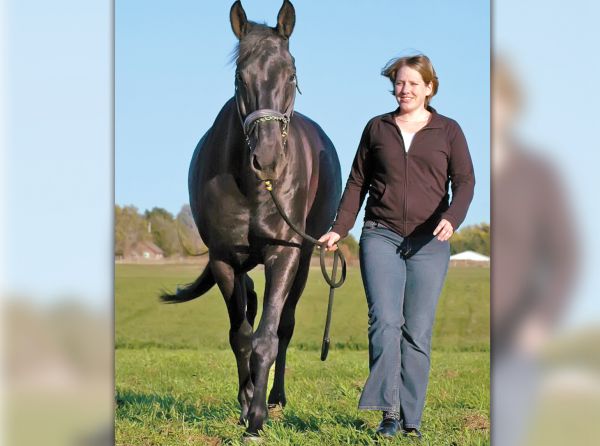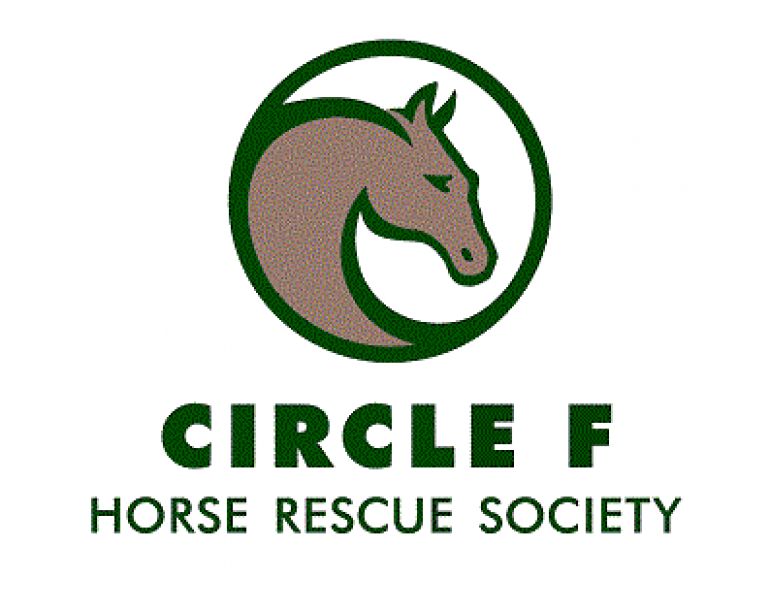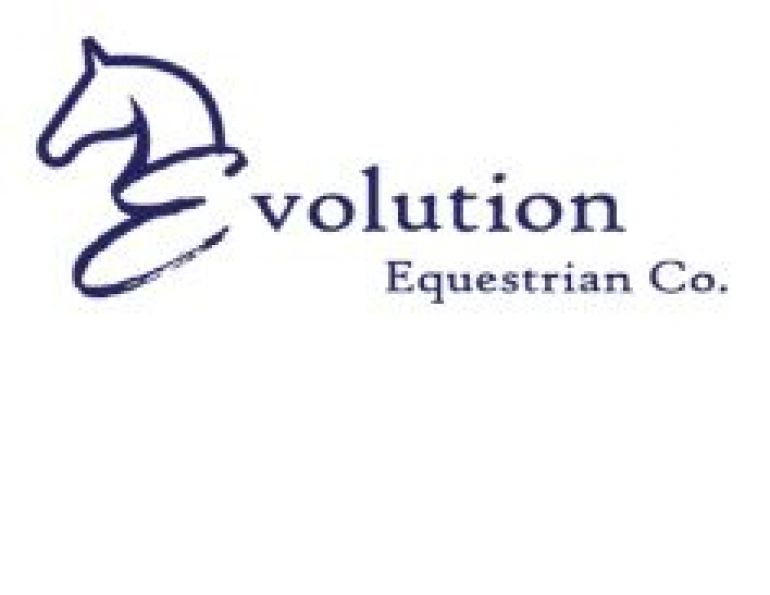By Jess Hallas-Kilcoyne
Reining is a sport “designed to show the athletic ability of a ranch type horse in the confines of a show arena,” according to the AQHA Rule Handbook, and as such, the reining horse should be quick, agile, and light on his feet.
“We need horses that are able to get low to the ground and come through themselves easily and quickly,” says top Canadian reining trainer, coach, and competitor Cheryl Mitchell, of Alberta. “That requires low-set hocks, short cannon bones, a strong hip, strong loin, and clean neck,” she continues, pointing out that these specific characteristics are also valued in working cow and cutting horses.
|
|
The hindquarters of the reining horse must be strong, and his hip long and sloping, in order for him to execute high-impact maneuvers such as spins and sliding stops which can take their toll on horses with weaker conformation.
“By the time cutting and reining horses become available to amateurs, many have already trained and competed heavily for over five years and had significant stress placed upon them due to this high level of activity,” says Jerry B. Black, DVM, referring to potential areas of concern as being trauma to soft tissue in the lower leg and the degeneration of the hock and stifle joints.
“We’re trying to breed now more for longevity in the reining horse so that we have horses that we can compete on for more years than we used to,” says Mitchell. “If the horse is physically built to do the work, the work will be easier for him and he will last for more years as a show horse.”
But, Mitchell points out, “It’s not enough to breed for athletic ability only. The temperament needs to be there as well.”
“The temperament has to be calm because you ask so much of them,” says Sharon Fletcher, who owns and operates Fletcher’s Horse World, in Waterford, Ontario, with her husband, John. “You do a big, fast circle and then you slow them down...you do your spins and wind them up and then you ask them to stop and sit there. They need a good temperament to be able to do that. They have to be in tune with the rider and have the ability to be calm.
Main Article Photo: Waltenberry; Courtesy of Mixxio/Wikimedia Commons
This article originally appeared in the September 2012 issue of Canadian Horse Journal.



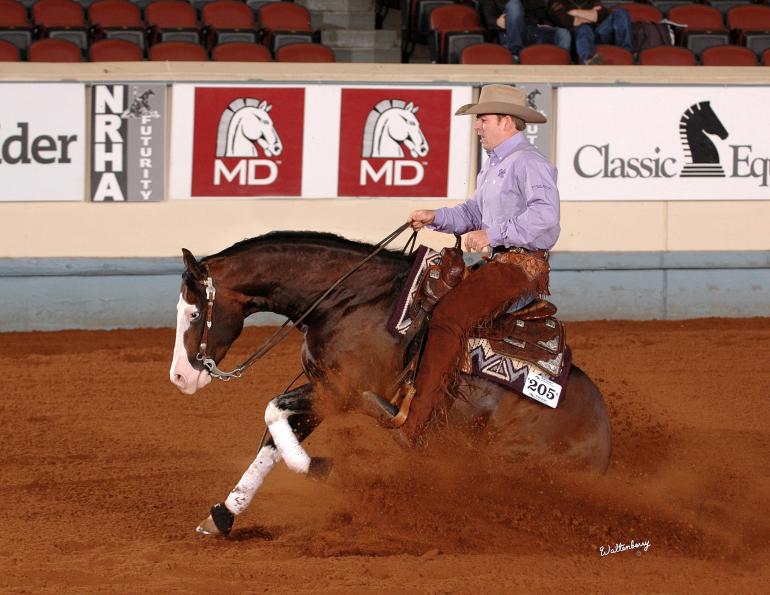
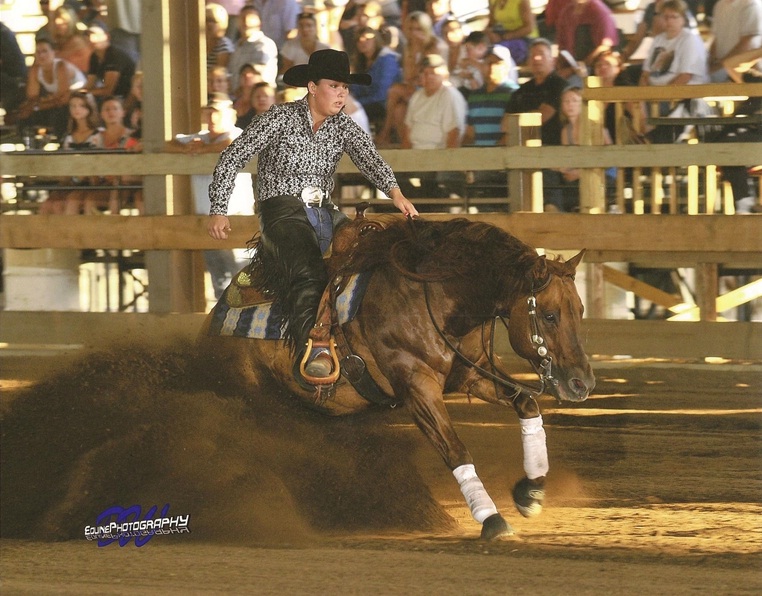 ABOVE & BELOW: Wimpys Tinseltown’s, owned by Sharon and John Fletcher of Waterford, Ontario, powerful hindquarters and well-muscled legs allow him to perform the physically demanding maneuvers required of a reining horse.
ABOVE & BELOW: Wimpys Tinseltown’s, owned by Sharon and John Fletcher of Waterford, Ontario, powerful hindquarters and well-muscled legs allow him to perform the physically demanding maneuvers required of a reining horse.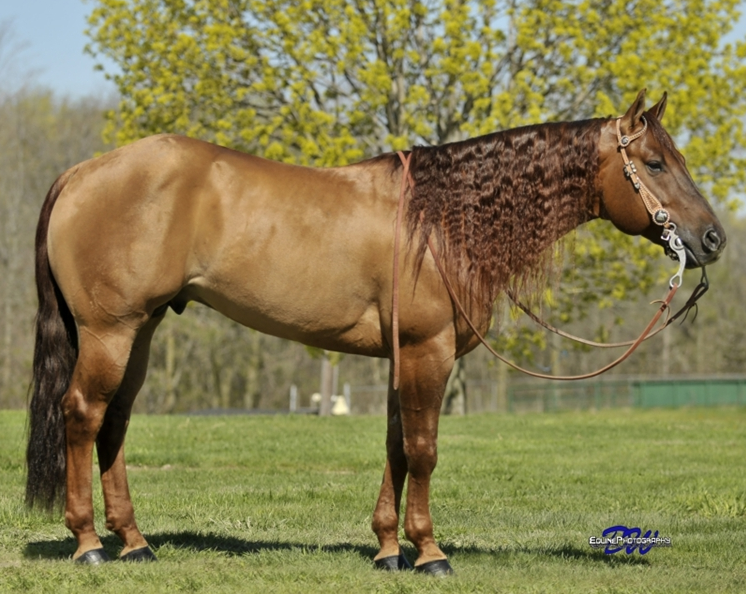 Photos: Dieter Wahr Equine Photography
Photos: Dieter Wahr Equine Photography

